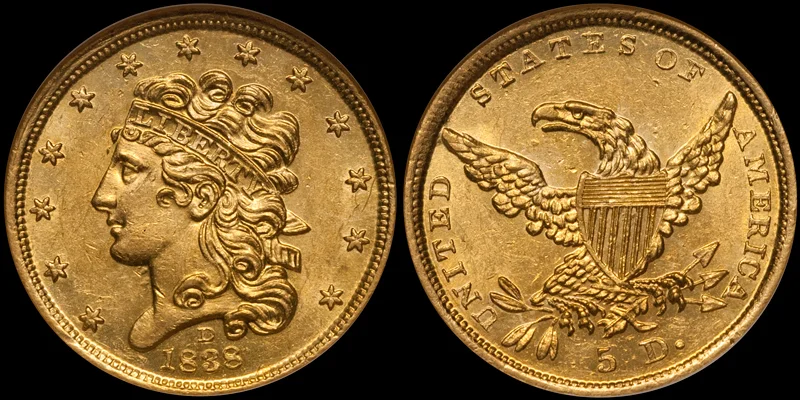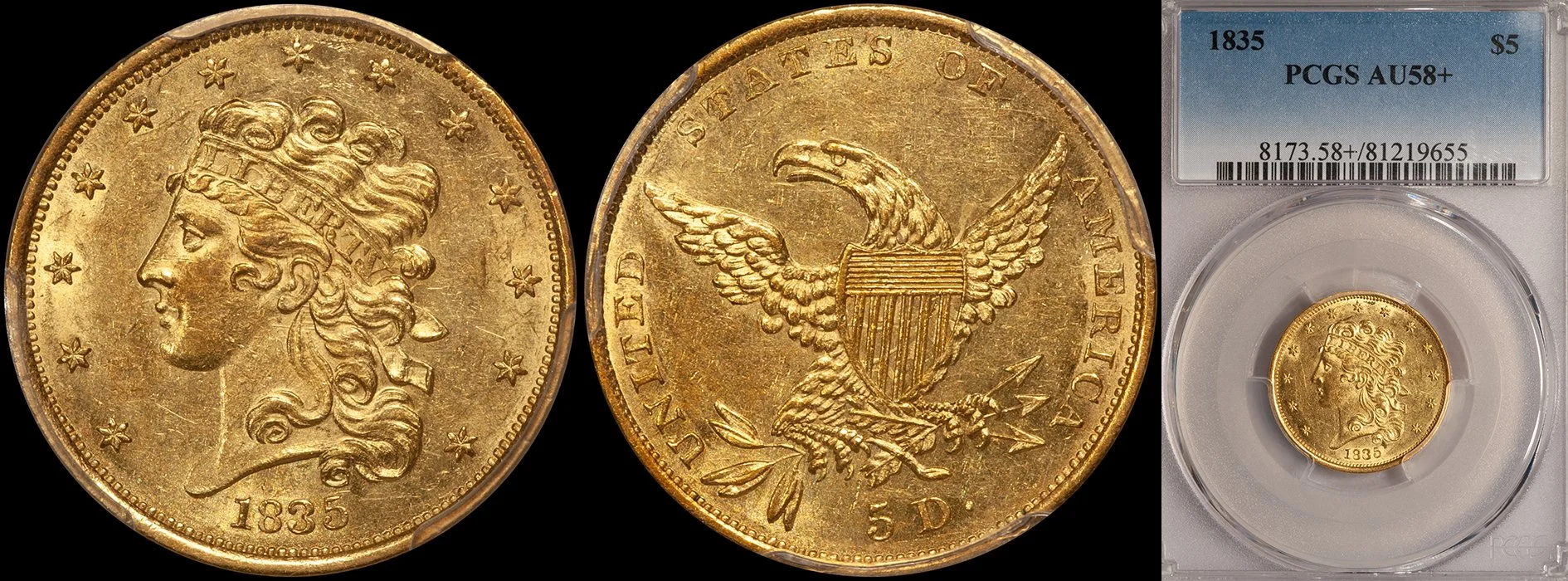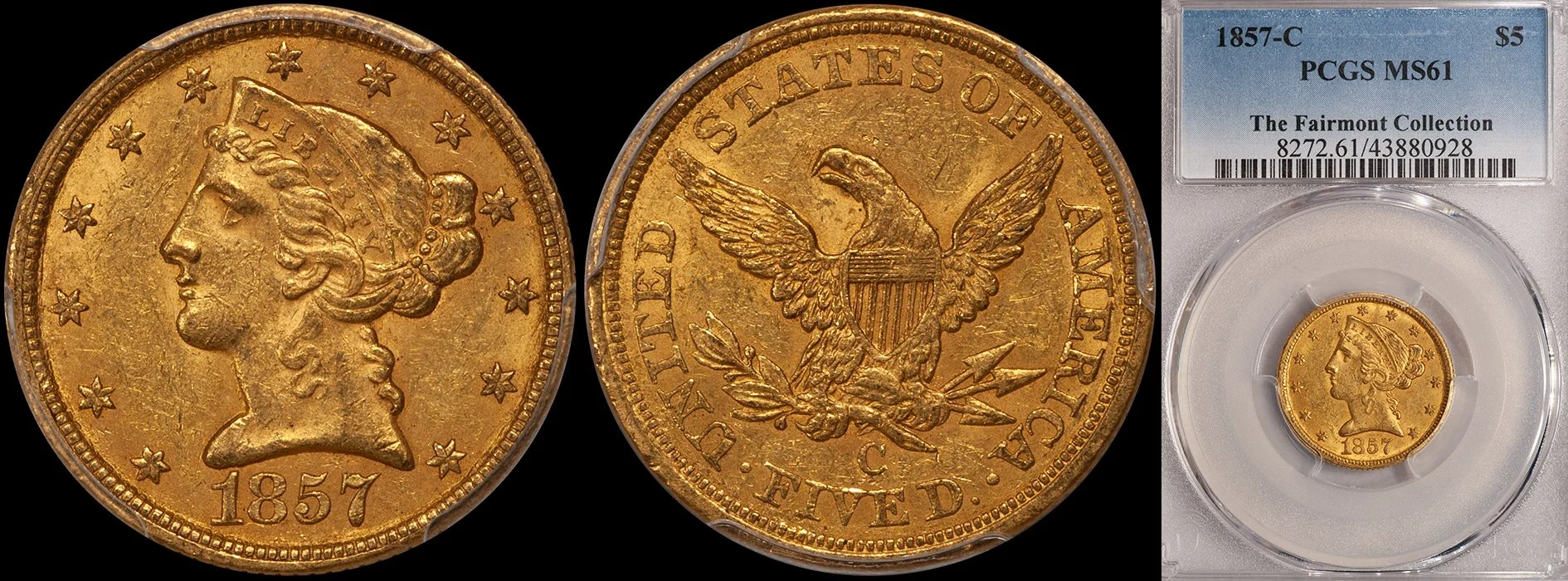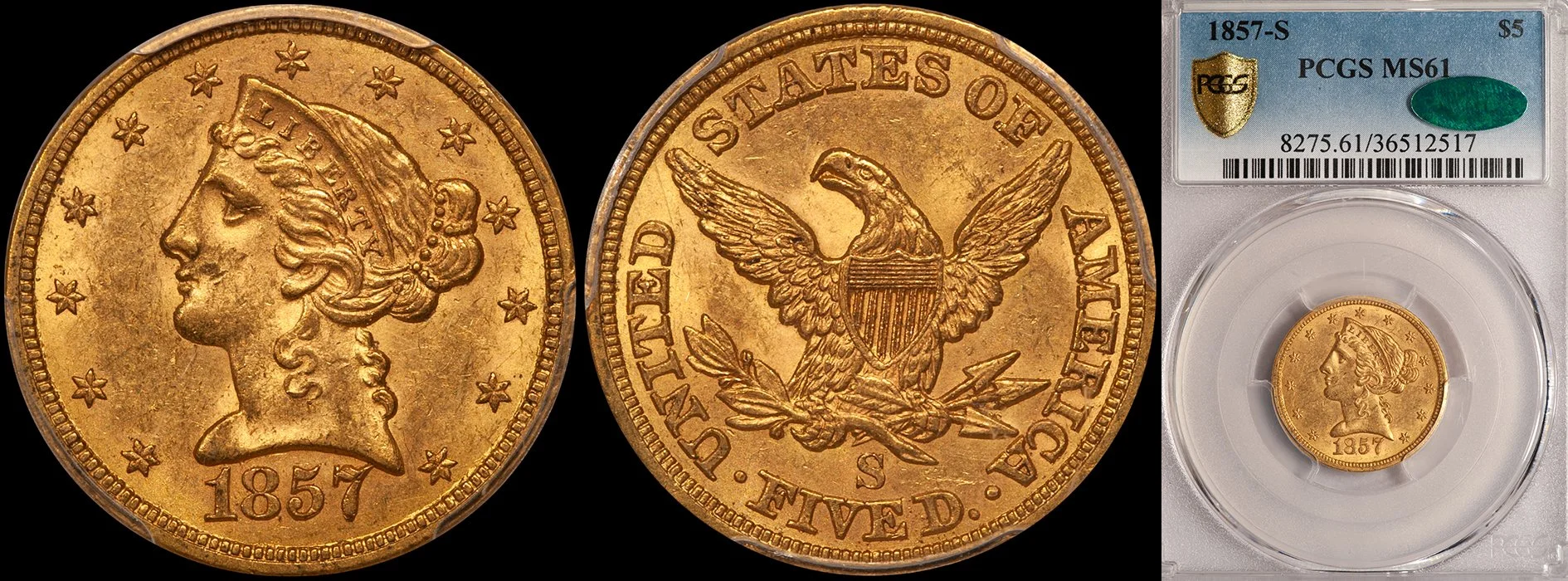Battle of the Classic Head Fives: The 1838-C vs. The 1838-D
/The 1838-C and 1838-D half eagles are famous issues for similar reasons: they are first-year-of-issue coins, and they both feature mintmarks on the obverse. They are issues with multiple levels of demand, and they have shown strong upsurges in popularity and price in the last decade.
If you ask most casual collectors which of these two issues is the rarer or more desirable, I’m guessing most would select the 1838-D. Let’s look at the Tale of the Tape for each issue and then I will add some analysis.
1838-C $5.00 NGC MS60
1838-C Half eagle Population Figures
Original mintage: 17,179
1838-D $5.00 NGC MS62
1838-D Half Eagle Population Figures
Original Mintage: 20,583
Based on the figures above, there are some interesting conclusions which we can make.
The first is that the average grade for the 1838-C skews towards the range below EF, and that this date becomes appreciably scarce in About Uncirculated. I doubt if there are more than 15 or so in AU grades with most in the AU50 to AU53 range. And if we limit this to choice, original coins—the sort which, in theory, should sticker at CAC—we may be talking no more than four or five coins known.
The average grade for the 1838-D is decidedly higher. Even assuming some resubmissions, the chart above suggests that typical 1838-D grades EF to AU. A look at recent auction data tends to support this, although it should be stressed that gradeflation has hit this date (and the 1838-C) hard, and that today’s AU50 1838-D is, in many cases, 2006’s EF45 1838-D.
Part of this skew towards low(er) grades for the 1838-C has to do with die preparation and engraving. The 1838-C half eagle is not a well-made coin and the reverse, in particular, is very “lightly” engraved, giving even coins with minimal wear the appearance of extensive circulation. The 1838-D is a better made issue with a reasonably good overall quality of strike and the sort of luster which wears better than its Charlotte counterpart.
One of the more interesting things about the charts above is the CAC numbers. Only eight 1838-C half eagles have been approved by CAC, and only two of these grade AU with none (yet) in Uncirculated. (The finest known 1838-C, graded MS63 by PCGS and in the Pogue collection, should almost certainly sticker at CAC if and when it is submitted). The number of 1838-D half eagles which have stickered at CAC is more than double, with a surprising nine in AU as well as a single piece in Uncirculated.
Given these figures, one would expect the 1838-C to be significantly higher priced, especially in higher grades. But this is not the case as the following chart shows:
PCGS Price Guide Figures
These figures are reasonably accurate (for PCGS graded coins) but are a bit low for choice, original pieces with good eye appeal.
Why isn’t the 1838-C priced higher relative to the 1838-D? I think the answer is clearly that Dahlonega half eagles are considerably more popular and widely collected than Charlotte half eagles. In fact, I’d be surprised if the number of serious D mint half eagle collectors weren’t at least three times the number of serious Charlotte mint half eagle collectors. This disparity explains at least some of the reason why the 1838-D is priced at close to the level of the 1838-C, despite being a much more readily available coin.
CONCLUSIONS
My long-held contention that the 1838-C half eagle is a very scarce date in in properly graded Extremely Fine and a truly rare one in About Uncirculated is clearly borne out by the PCGS/NGC/CAC population figures. I would contend that this date is undervalued in higher grades, and it will be interesting to see what the finest known PCGS MS63 brings when it is sold in the Pogue IV auction in May, 2016. Will a rising tide lift all boats?
The 1838-D half eagle is, in theory, an overvalued coin but it is so popular that there are always willing buyers for nice examples. I’m beginning to think higher-end AU examples might be overpriced. As an example, a PCGS AU58+ just sold for $32,900 as Lot 5069 in the recent Heritage March 2016 auction. At this price point, there seem to be other rarer, more interesting coins available.
Are you looking for an 1838-C or 1838-D half eagle? Why not contact “the guy that wrote the books?” Call or email Doug Winter to discuss your collecting needs, whatever they might be!


















